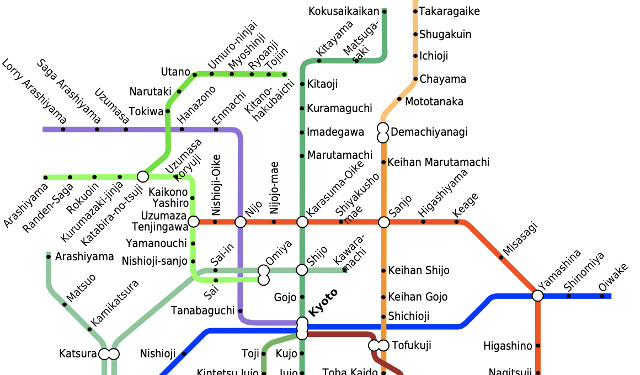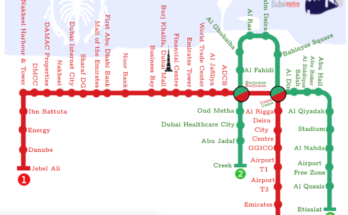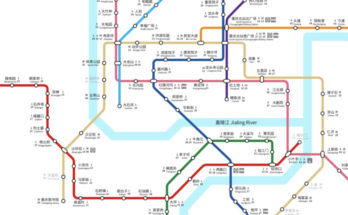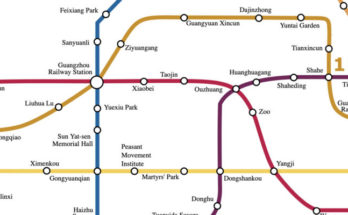With the opening of Kyoto Municipal Subway, Kyoto, the former capital of Japan, got its own metro network. The subway system made commutes within the city convenient for residents and tourists alike. City’s main attractions e.g. Nijo Castle, Daigoji Temple, Gosho Imperial Palace and Toji Temple are all easily accessible from the subway stations. For the rest, the system offers transfer opportunities.
Kyoto Metro
Currently, it operates through 2 lines totaling to a track length of 31.2 km. Together they connect 31 stations. Kyoto Municipal Transportation Bureau is controlling the operations of the system. As per 2008 statistics, every day, around 3, 50,000 passengers use the metro system.
Historical Background
Kyoto is the sixth-largest city in Japan home to 1.5 million people. It is also a city of historical significance drawing tourists in large numbers. Immediately after WWII, planning started to construct an underground rapid transit system to reduce the use of cars in the city.
The Karasuma Line, between Kyoto and Kitaoji, was opened on 1st April 1981. Further sections were added consecutively and the line attained its current length on 3rd June 1997. An express service between Kintetsu Nara and Kokusaikaikan started on 15t March 2000.
The Tozai Line was opened in October 1997 with a 12.7 km long section between Daigo and Nijo. After subsequent expansions, it achieved its current length on 16th January 2008.
Hours of Operation
Trains begin journey at around 5 in the morning stop a little before midnight. On weekends and holidays, the timing changes slightly. Trains have different headway at different times of the day. In peak hours, the headway is 4-5 minutes. Early in the morning, trains have headway of 27 minutes.
You’ll get the detailed timetable for each station here.
Lines and Stations
Two lines are currently operational, namely, the north-south Karasuma Line and the east-west Tōzai Line. Each line has 16 stations including a common transfer station. The stations are mostly underground. Stations on Tozai Line have platform screen doors. Others have central platforms. 6-car trains run on the lines at a maximum speed of 90 km/hour.
Karasuma Line
The Karasuma Line serves city’s seven wards. It is indicated with green color on the subway map. From this line, passengers can transfer to the Tōzai Line, Kyoto Line and JR Kyoto Line.
Main stations along this line are: Takeda, Kyoto, Shijō, Karasuma Oike, Kuramaguchi, Kitayama, Kokusaikaikan
Tōzai Line
This line is the busiest of the two. It is indicated by vermilion color on the map. It starts from Uzumasa Tenjingawa Station in the west and then runs to Misasagi Station in the east. Then it takes a bend and ends at the Rokujizō Station in the southeastern part of the city. It runs through the Kyoto Downtown area. It offers interchange to the other subway line, Nara Line, Sanin Main Line, Keihan Keishin Line etc.
Main stations connected by the line are: Uzumasa Tenjingawa, Nijō, Karasuma Oike, Sanjō Keihan, Misasagi, Yamashina, Rokujizō
There is also an underground line in the city center, called Keihan Line and a suburban train, Hankyu Kyoto Line in Kyoto downtown.
Expansion
There are plans to extend both of the lines. However, for these, no definite timeframes have been decided yet. The Karasuma Line is planned to be extended from the southern terminal further to Rakunan new town.
The Tozai Line is going to be extended another 10 km to enter the Rakusai new town. However, the current project limits the extension only to Uzumasa Tenjingawa. The authority is considering whether it is profitable to construct the full extension.
Fare and Ticket
The fare in Kyoto Subway varies with distance. The base price for an adult person is 210 Yen while that for a child is 110 Yen. Besides regular tickets, there are IC cards that can be used to pay the fare. For tourists interested in sightseeing, the Kyoto Municipal Transportation Bureau has introduced following passes:
Surutto Kansai Miyako Card
The card is available from in 1000, 2000, 3000 and 5000 Yen denominations. As you travel the travel cost is deducted from the card balance. It is valid also in Keihan and Hankyu lines as well as on city buses.
Kyoto Sightseeing One – and Two-day Pass Card
The 1-day pass for an adult costs 1200 Yen and for a minor costs 600 Yen. For 2-day pass, the prices would be 2000 Yen and 1000 Yen respectively. The pass is valid in city buses also.
Traffica Kyoto Card
This card costs either 1000 Yen or 3000 Yen. The fare price is deducted from the card value every time a passenger rides with this card. This card can also be used in the buses.
Tickets are to be bought from the platform ticket vending machines. Passes are available at the city subway or bus information counters.
Get further insight on Kyoto Subway system from here.
Facilities and Services
A citizen or a tourist – the subway authority offers you following facilities to make your journey convenient:
-
-
- You’ll hear heart touching guzheng music when the train doors close every time.
- The subway stations are barrier-free and fully accessible.
- In some stations, large display boards show the bus connections and their timings.
- There are convenient stores, cafes and mobile recharge stations located in the stations.
- Station instructions are written in English, Japanese, Korean and Chinese.
- Free Wi-Fi is available at subway stations.
-
Rules
Like any other metro system, Kyoto Municipal Subway has its own set of rules. Get a glimpse of them before you start your journey.
-
-
- When a train enters the station, waiting passengers should remain behind the white lines drawn on the platforms.
- Tickets or IC cards must be validated at the ticket gates located at the stations.
- Passengers must return the tickets at the exit gates. The IC cards, however, are given back to the passengers.
- Inflammables are not allowed within the subways.
-
Tips
Here are few tips for the first-time riders.
-
- Never forget to take back your ticket or IC card at the ticket gates of exit points.
- If your final destination is little far from the subway station, you can rent a bike from the bike rental point adjacent to the station.
- Plan ahead your journey and take a note of the bus connections, if any.
- Fare charts are displayed close to the ticket machines. Have a look at this and make sure you are buying the right ticket.




